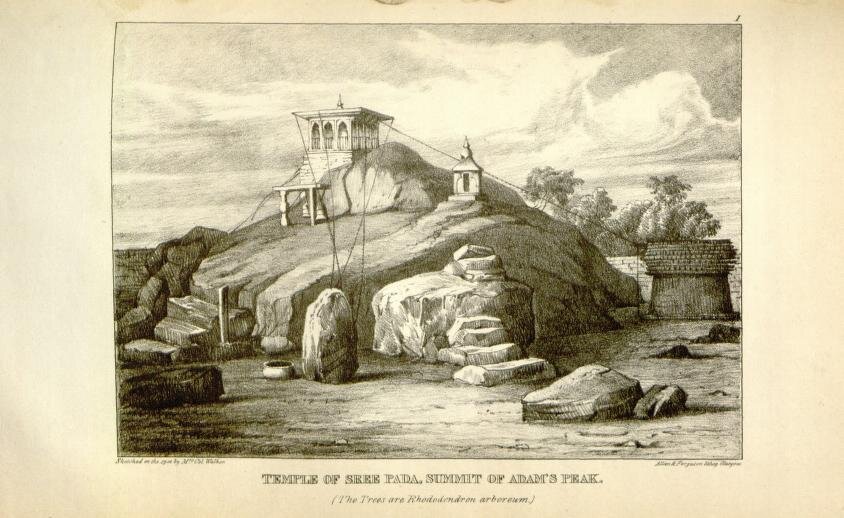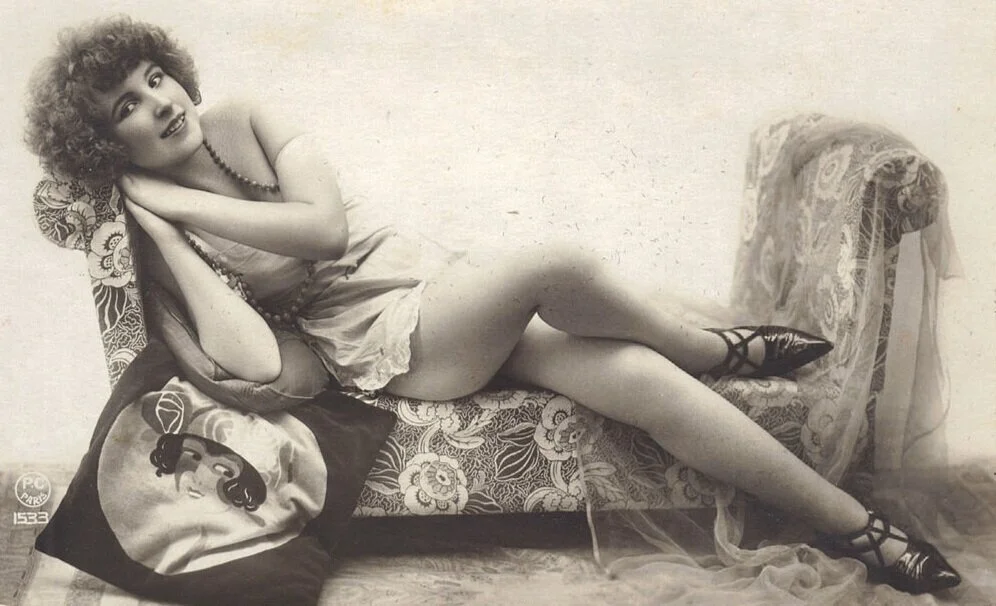Floral Fixation
Traveling through rural Sri Lanka in 1837, Anna Maria Walker wrote that she had entered “terra incognita,” crossing into previously unexplored lands populated by the flora she so ardently desired to make hers. Working by candlelight, Walker transformed her botanical specimens—a few orchids, some “inconspicuous” and others potentially new—into hasty, uncolored illustrations. Too finicky to be shipped alive and too fragile to maintain their colors and structure when preserved, Walker’s quick impressions were the best chance naturalists in Britain had to describe, name, and order these orchids.
Beating the “orchidmania” that gripped Victorian collectors in the second half of the 19th century by at least a couple of decades, Walker still knew the strange value of her orchids. Her illustrations, however hurried, would be considered “specimens” and “samples” of their fellow species, made representative of the terra incognita of one of Britain’s most prized colonies. Naturalists in Britain provided justification for the natural riches of colonies, using evocative language to claim “exotic” specimens could, with the right finesse, be forced to “submit to the care of the gardener.” Walker’s illustrations furthered these claims by lending literal color to these “new” objects, linking constructions of “nobility” and “purity” to blushing pinks and whites and making visible the ways in which orchids wound their way through colonial extraction and exploitation.
Born in Edinburgh in 1778, Walker’s life was similarly bound up in the spread of colonial power. Unmarried in her twenties, she followed her father to Saint Helena in the South Atlantic Ocean, leaving the island almost two decades later for India, where she quickly met and wedded an ambitious army captain, George Warren Walker. The couple moved to Sri Lanka where, accompanied by a team of guides, porters, and servants, Walker climbed Adam’s Peak in 1833. In a series of letters published in one of London’s top botanical journals, she recorded and illustrated her expedition as the first white woman to climb the mountain.
Walker had prepared for this expedition by seeking out training in botanical illustration in Edinburgh, determined to accurately represent the plants that gripped naturalists in European gardens. Noting that she knew of “no Class or Master, for Ladies,” Walker asked William Jackson Hooker, the Director of the Royal Botanic Gardens, Kew, to send her some of his “original botanical drawings” to study, copy, and work from. Walker particularly lamented the fact that most instructors “never think of anything but the exterior of the flower” while remaining ignorant in the intricacies of field sketching. In seeking out this sort of training, Walker was pursuing a “polite and useful art” appropriate—and often desired—for and by British upper- and middle-class women, but her commitment to studying plant morphology, which focuses on the interior of the flower, was relatively unusual.
Walker’s experience in South Asia followed the familiar pattern of colonial expeditions. Like many other colonial explorers, especially women, she traveled by palanquin—a coffin-shaped box on poles carried by the men she referred to as “Coolies.” She chided an earlier traveler for describing these men as “small horses,” arguing that, despite being “human beings,” the traveler “would have been nearer the mark if he had called them ‘black cattle.’” Her curiosity towards the people she depended on alternated between humility and impatience. Walker praised the men who collected her orchids and knew they could quickly abandon her, trapped in her wooden box, if an elephant charged (“and who could blame them?”). But she also complained about those who couldn’t be “forced to work” and who left the collecting party.
Such lavish illustrations and ongoing promises of environmental riches shaped scientific and public perception of orchids, lending them a sense of wonder compared to more diminutive “hardy,” or native British, flowers. As Anne Secord has argued, some of this jaw-dropping imagery was intentionally promotional, as early 19th century botanists sought to sell future practitioners and patrons on their lagging field. Orchids, though, promoted something else: a rich and lucrative field for colonial explorers laden with sometimes explicit promises that “discovering” a new, flashier rare flower could bring both scientific reputability and a potential payout from private collectors or commercial nurseries. The more exotic the better.
“Such lavish illustrations and ongoing promises of environmental riches shaped scientific and public perception of orchids…”
Back in Britain, some of Walker’s orchid illustrations—along with field illustrations produced by dozens of other colonial explorers—were transformed into detailed, edited plates for botanical texts, often by other women trained in the polite art. A few orchids were copied and colored by Flora Jerdon, another Scottish naturalist working in South Asia, while others were turned into lithographs for Robert Wight’s massive Icones Plantarum Indiae Orientalis by the South Asian artist Govindoo. Artists such as Sarah Anne Drake, in-house illustrator for the “father of modern orchidology,” John Lindley, specialized in creating these colored plates, demonstrating a talent for turning short textual descriptions, quick field sketches, and dried herbarium specimens into the kinds of orchid illustrations that defined their value, both in exorbitantly expensive tomes and in popular serials. Lindley relied on both Walker and Drake’s illustrations in his own studies, despite arguing for the separation of botany as a science for “the serious thoughts of a man” from its reputation as mere “amusement for ladies.”
Even as she made the landscapes of Sri Lanka visible, signaling to botanists back in Britain that these rainforests were lush and teeming with valuable specimens, Walker acknowledged the ongoing destruction of the forests around her by colonial developers. While being “tempted by the beauties of vegetable creation to collect more than [she] could carry away,” the botanist noted “that the axe now resounds through the primeval forests of Ceylon,” driven not just by the building of roads from which her travels benefited but by “speculating individuals, who calculate on making rapid fortunes by the growth of Coffee, Cinnamon, and other Spices.” Areas of forest had become private property set for “clearing and planting, as fast as the scanty population permits.” Walker failed to reflect on her own complicity in this progress.
Years later, other botanists recognized the connection between orchid hunting and environmental destruction in South Asia. Fueled by the lavish illustrations produced by collectors like Walker, entire trees were felled to reach the orchids growing on their branches; paths were cleared through the rainforests for easier transportation of specimens; and “vulgar,” more common, orchids were killed and cast aside in search of more beautiful objects. Working from the foothills of the Himalayas in 1850, Joseph Dalton Hooker noticed that “the roads here are becoming stripped like the Penang jungles,” writing that “it sometimes looks like if a gale had strewed the road with rotten branches and Orchideae.” Orchidmania had begun at full force, propelled by increasing numbers of images suggesting what these rainforests held and dependent on the exploitation of indigenous labor.
Walker died at the age of 74 on the Malabar Coast, where her body still lies. While she illustrated hundreds of plants, many of them new to British botanists, Walker is still best known for her devotion to orchids, even though many of her illustrations were never published or even acknowledged by her colleagues. One of Walker’s most unusual illustrations, a picturesque view of the “Temple of Sree Pada” at the summit of Adam’s Peak, was lithographed and published along with her letters, immediately followed by a series of botanical illustrations produced by other artists advertising the floral riches of other lands. It feels impossible to divorce these images from each other: a scenic view produced by a white woman carried, quite literally, to the top of a mountain by men she called “Coolies” and richly rendered illustrations making “new” plants visible. For Walker, like so many other botanists, the study of flora—and especially of orchids—was inextricable from the objectification and destruction of colonial environments.
*Author’s note: Correspondence between Walker and William Jackson Hooker come from the Director’s Correspondence, Royal Botanic Gardens, Kew, Library & Archives
Further Reading
David Arnold, The Tropics and the Traveling Gaze: India, Landscape, and Science, 1800 - 1856 (Seattle: University of Washington Press, 2006).
Jim Endersby, Orchid: A Cultural History (Chicago: University of Chicago Press, 2016).
Ann B. Shteir, Cultivating Women, Cultivating Science: Flora’s Daughters and Botany in England, 1760 to 1860 (Baltimore: Johns Hopkins University Press, 1996).
Image credit: TAB XVIII from Companion to the Botanical magazine :being a journal, containing such interesting botanical information as does not come within the prescribed limits of the magazine; with occasional figures, Mrs Col. Walker, 1835 (Biodiversity Heritage Library Library | Public Domain)








